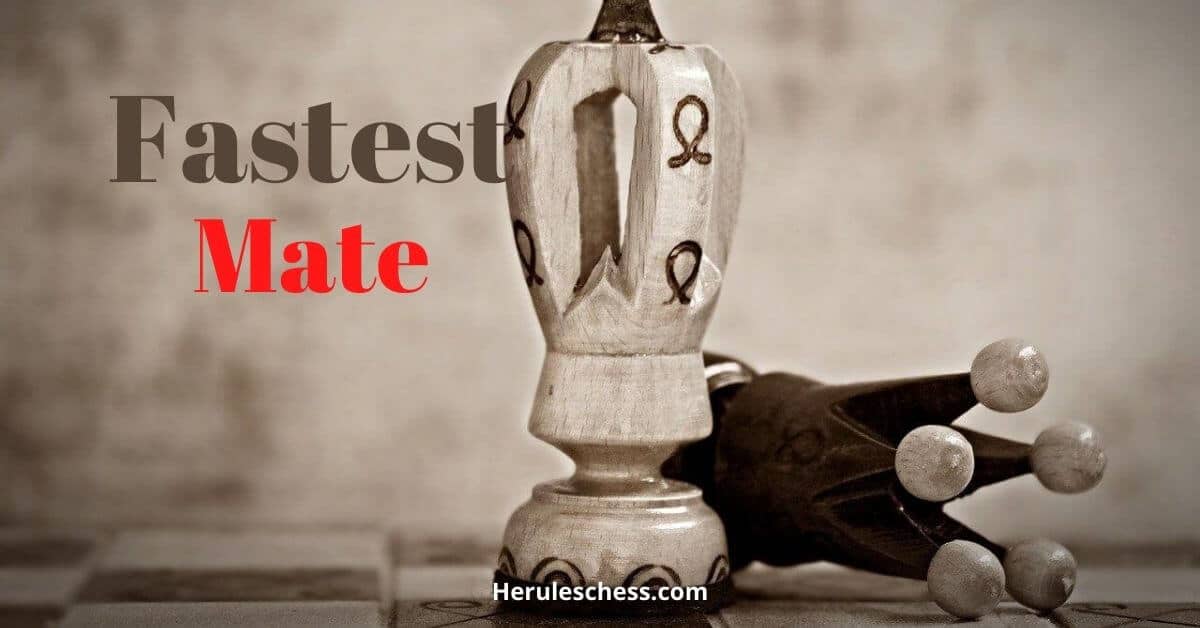You now know how the board works, the value of each piece and how to play it hence are itching for a game. Not so, fast. It is important to also learn the various chess openings and how to respond to each of them.
Chess openings are practical, effective, and time-tested initial moves that help you to: avoid traps such as Fool’s Mate, acquire a good position in the middle game, save time during the game’s opening, and gain control of the the game among other benefits.
Here are the top 5 most popular chess openings:
- Ruy Lopez
- Queen’s Gambit
- Sicilian Defense
- French Defense
- Caro Kann Defense
Most Popular Chess Openings
1. Ruy Lopez
Discovered by a Spanish priest named Ruy Lopez de Segura, it is one of the oldest chess openings. One of its key objectives is to gain dominance of the center of the board where the ‘battle’ is believed to be the hottest. In the opening, white begins by playing e4, opening up the white bishop’s path and also liberating the Queen.
Black plays e5. White plays Nf3 thus attacking the black pawn. Black plays Nc6 defending this pawn. White then moves the bishop to b5 attacking the knight protecting the pawn.
These moves puts pressure on the black side to defend the center. It also enables the white side to develop their pieces quickly and prepare to castle.
Depending on his response, black may get a spoiled pawn structure due to double pawns. To try prevent this, the most common response by black is a6 (Morphy defense).
This way the white bishop is forced either to exchange with the knight or move to a4, after which it goes, NF6, 0-0, Be7. There are several other lines that can be played in the Ruy Lopez opening including the Norwegian variation, Barendregt variation, and Caro Variation, just to mention a few.
2. Queen’s Gambit
This is a tactical gambit, in which white seeks to take control of the center by temporarily giving up a pawn. So, white plays d4, and black responds with d5. Then white plays c4. If black responds with dxc4, he has accepted the gambit. White should then respond with e3.
This move protects the d4 pawn and also enables the bishop to threaten and possibly regain a pawn. Most probably black will not give up this pawn easily so the following moves often follow: b5, a4, c6, axb5, cxb5, Qf3.
In this variation, white seeks to take control of the center and regain a pawn. Though black may resist giving c4 pawn, they will eventually have to so that they can better focus on white’s attack in the middle.
White can then enjoy constantly attacking and putting pressure on the black. How black responds to these attacks will determine how the game plays out.
3. Sicilian Defense
This is one of the opening moves in chess that experts prefer. It is a good response to e4 because, instead of just responding to the moves by white, black gets to control the center and avoid the symmetry of e5.
This levels out the playground giving both opponents an equal chance for a win. According to chess Grandmaster John Nunn, this type of opening is a great response for black, as it not only grants equality but also opens up room for attack.
In most of the games that use Sicilian defense, the sequence of the game is as follows e4, c5, Nf3, from this point black can choose to respond with either, d6, Nc6, or e6. If white plays d4, this variation is known as the open Sicilian and can become extremely complex.
Click here to see other variations of the Sicilian Defense and the best move to make for each player.
4. French Defense
The main aim of using the French defense opening is to temporarily surrender the middle area to white, at the same time limiting its chances of attacking f7.
The opening also enables activity on the queen’s side intending to facilitate counter-play at the center. The French Defense involves the moves 1) e4, e6 2) d4, d5 3)e5. After these moves, black strongly seeks to gain control of the center.
However, one of their bishops (c8) is limited. This problem can be solved as the game proceeds.
Generally, this opening favors black as it enables an impenetrable pawn structure. Though white’s e5 pawn is advanced, black can immediately launch an attack on white’s d4 (base pawn) with the move f7.
Afterward, black can play Nc6…, Qb6… and Nf5. These moves will force white to focus on defending the d4 pawn with the moves c3, Nf3, Be3, and Qd2. After black has exerted maximum pressure on the d4 pawn, he can then begin an attack on e5 with the move f6.
In this opening, blacks unleashes a series of attacks with the hope that white will give up his control of the center. If white responds poorly, he will lose the control and ruin his pawn structure. This gives black the liberty to move his spaces around.
However, this is not to say that white is at the losing end. His e5 pawn is in an advantageous position, and closer to black’s king. If white starts an early attack, he may distract black from attacking thus maintaining his control of the center.
Though there are several other variations to the French defense the bottom line is; the one who dominates the center stands a higher chance of winning.
5. Caro Kann Defense
The Caro Kann Defense is a strong opening for black against the move e4. Black responds with the move c6. This prepares d5 to challenge the pawn e4.
This is achieved once white plays d4. The preceding moves are 3) Nc3, dxe4. 4)Nxe4, Bf5. There are several other variations to the opening, and just like in the French defense opening, black will be aggressively fighting to control the center. Fortunately in Caro Kann’s defense black does not block his bishop.
However, the opening has its fair share of disadvantages. To begin with, black blocks the c6 square which could have been occupied by the b8 Knight, as a result, the knight is forced to move to d7. Also, white gets to acquire more space.
Regardless, this opening is a breath of fresh air for those who find other openings such as Ruy Lopez and Sicilian Defense monotonous. It also offers a solid score for black, maximizing his chance of winning.






